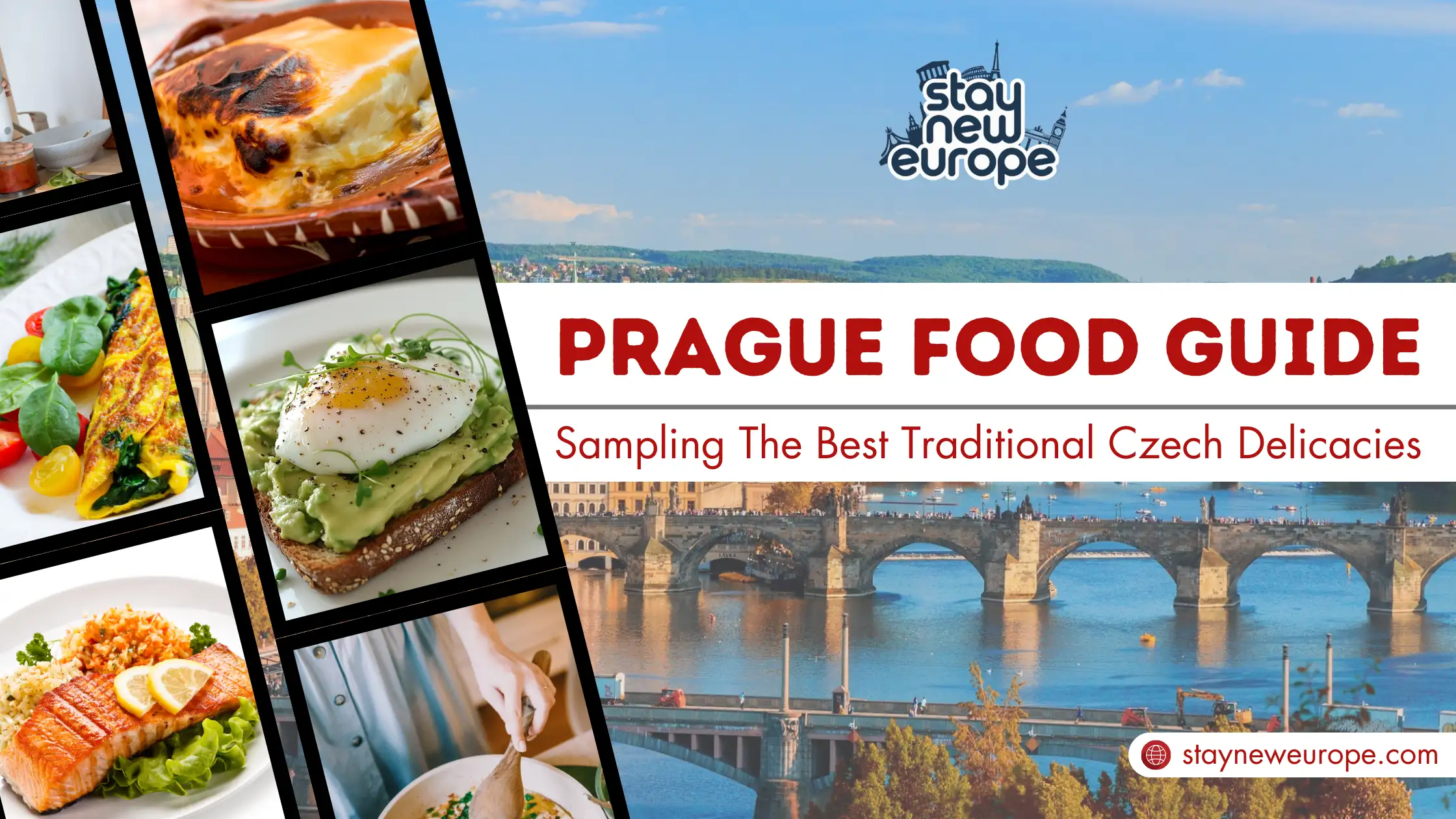Prague offers more than stunning architecture. The city’s traditional food scene is a must-experience.
In this guide, we’ll explore the best traditional Czech dishes you can’t miss in Prague. Czech cuisine is rich in flavors and history. From hearty meat dishes to delightful pastries, there is something for every taste. Imagine strolling through the cobblestone streets of Prague, the aroma of freshly baked bread filling the air.
You stop at a local eatery, savoring a delicious meal that tells a story of the city’s past. This guide will help you discover these culinary treasures. Whether you are a foodie or just curious, get ready to embark on a mouth-watering journey through Prague’s traditional dishes. Let’s dive in and taste the essence of Czech culture.
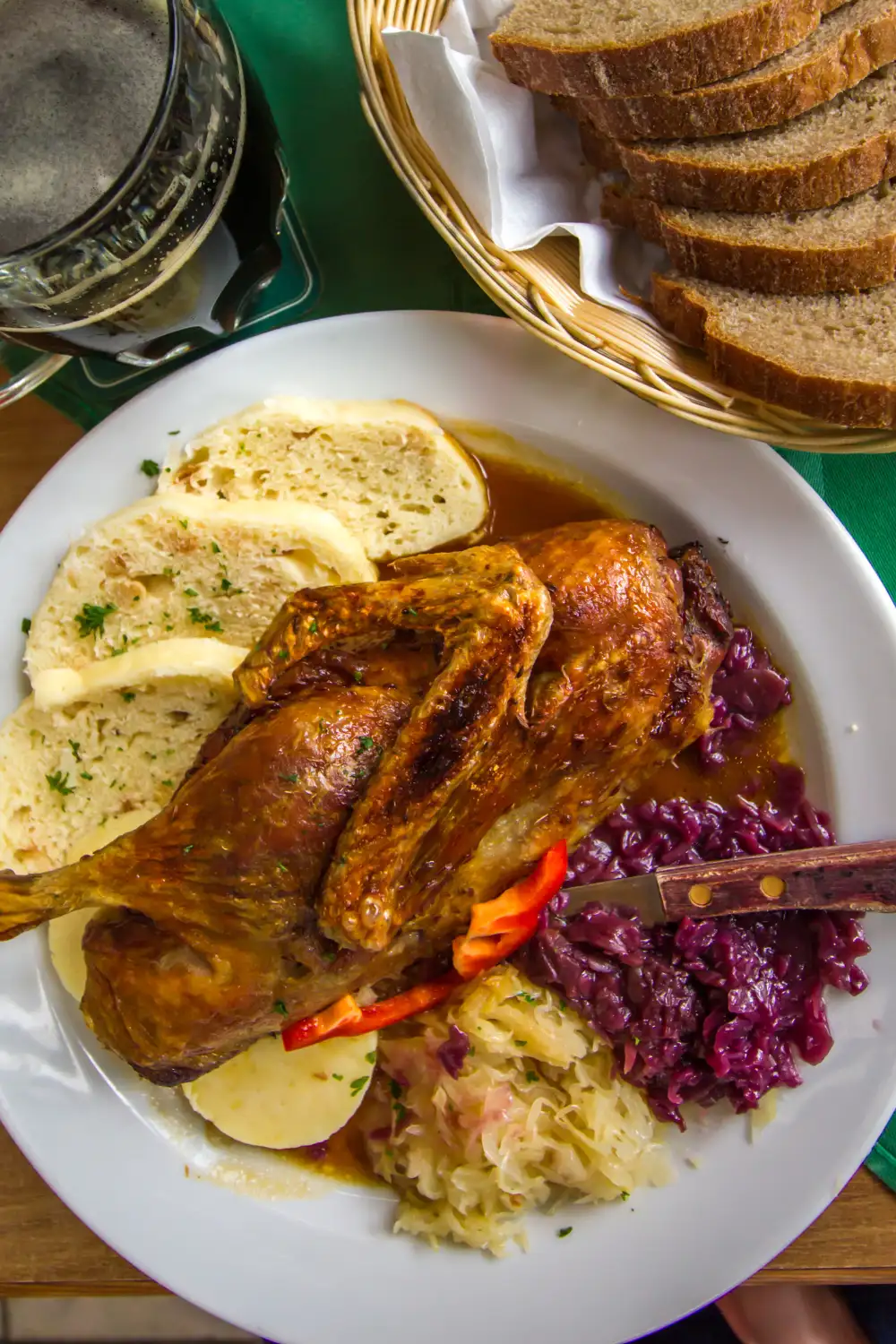
Czech Cuisine Basics
Prague is a city rich in history and culture, and its food is no exception. Sampling the best traditional Czech food is a must for any visitor. Understanding Czech cuisine basics is essential for fully appreciating the flavors and ingredients that make this cuisine unique. Let’s dive into the key elements that define Czech culinary traditions.
Key Ingredients
Czech cuisine relies on a variety of ingredients that give its dishes a distinctive taste. Here are some of the most common:
- Pork: A staple in Czech cooking, used in many dishes like vepřo knedlo zelo (roast pork with dumplings and sauerkraut).
- Beef: Often featured in hearty soups and stews, like svíčková na smetaně (marinated beef with creamy sauce).
- Potatoes: Versatile and used in various forms, from mashed to dumplings.
- Cabbage: Essential for making sauerkraut and cabbage soups.
- Caraway seeds: A common spice, adding a unique flavor to meats and breads.
- Mushrooms: Frequently used in soups and sauces.
- Garlic: Enhances the flavor of many Czech dishes.
Czech cuisine also includes a variety of herbs and spices. These ingredients create the rich, hearty flavors that Czech food is known for. Additionally, dairy products like butter and cream are widely used, adding richness to many recipes.
Cooking Techniques
Czech cooking techniques focus on enhancing the natural flavors of ingredients. Here are some common methods:
- Roasting: Meat, especially pork and beef, is often roasted to bring out deep flavors.
- Slow Cooking: Stews and soups are simmered for hours, allowing flavors to meld.
- Baking: Many traditional Czech pastries and breads are baked, such as koláče (sweet pastries).
- Boiling: Dumplings and potatoes are typically boiled, ensuring a soft texture.
- Pickling: Vegetables like cucumbers and cabbage are pickled, creating tangy sides.
These techniques are designed to maximize flavor and texture. For instance, slow cooking ensures that meats are tender and flavorful. Roasting helps to caramelize the surface of meats, adding depth to the taste. Baking is crucial for creating the perfect texture in pastries and bread.
Another important aspect is the use of sauces. Czech cuisine often includes creamy or tangy sauces that complement the main dish. These sauces, like the creamy dill sauce in koprová omáčka (dill sauce), add a layer of complexity to the flavors.
The combination of these techniques creates the hearty and comforting dishes that Czech cuisine is famous for. Every method contributes to the unique taste and experience of Czech food.
Must-try Dishes
Prague is a city of rich history, stunning architecture, and unforgettable culinary experiences. Exploring traditional Czech food is a delightful journey that offers a taste of the country’s culture. As you wander through the charming streets, be sure to indulge in the must-try dishes that define Czech cuisine. Each dish tells a story, revealing the flavors and traditions that have been cherished for generations.
Svíčková
Svíčková is a classic Czech dish that captures the essence of home-cooked comfort. This hearty meal features marinated beef sirloin served with a creamy vegetable sauce. The sauce is made from root vegetables like carrots, celery, and parsley, giving it a rich, tangy flavor. Often garnished with whipped cream and cranberry compote, this dish is a perfect blend of sweet and savory.
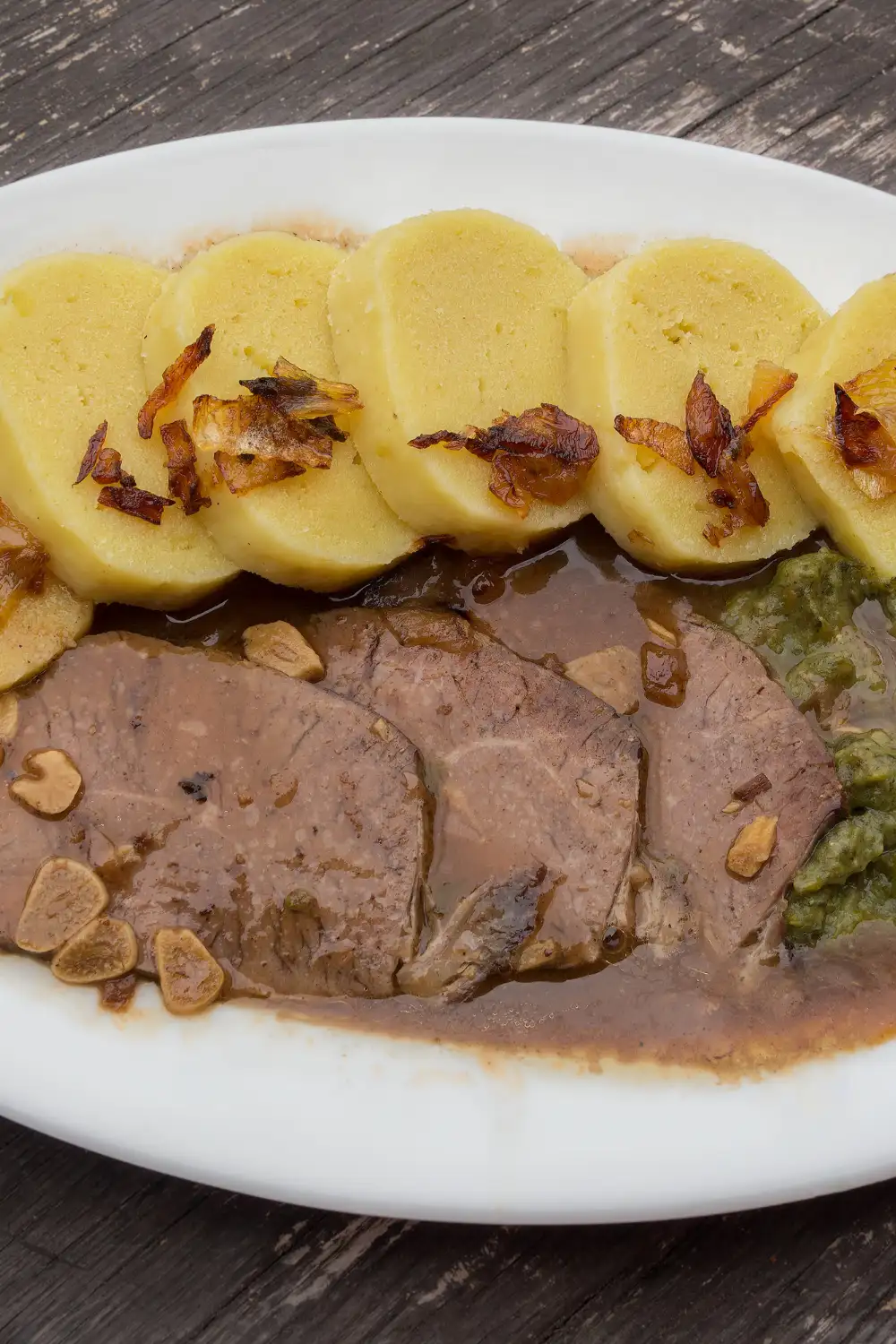
Here are some key components that make svíčková a must-try:
- Marinated Beef: Slow-cooked to perfection, ensuring tenderness.
- Vegetable Sauce: Thick and creamy, with a hint of sweetness.
- Dumplings: Served alongside, absorbing the flavors beautifully.
Locals often enjoy svíčková during family gatherings, highlighting its importance in Czech traditions. Whether you’re dining at a local pub or a fine restaurant, this dish promises a memorable culinary experience.
Goulash
Goulash is another staple that showcases the robust flavors of Czech cooking. Originating from Hungarian cuisine, Czech goulash has evolved to become a favorite comfort food. This dish is a savory stew made with beef, onions, paprika, and other spices. The slow-cooked meat melts in your mouth, while the rich sauce warms your soul.
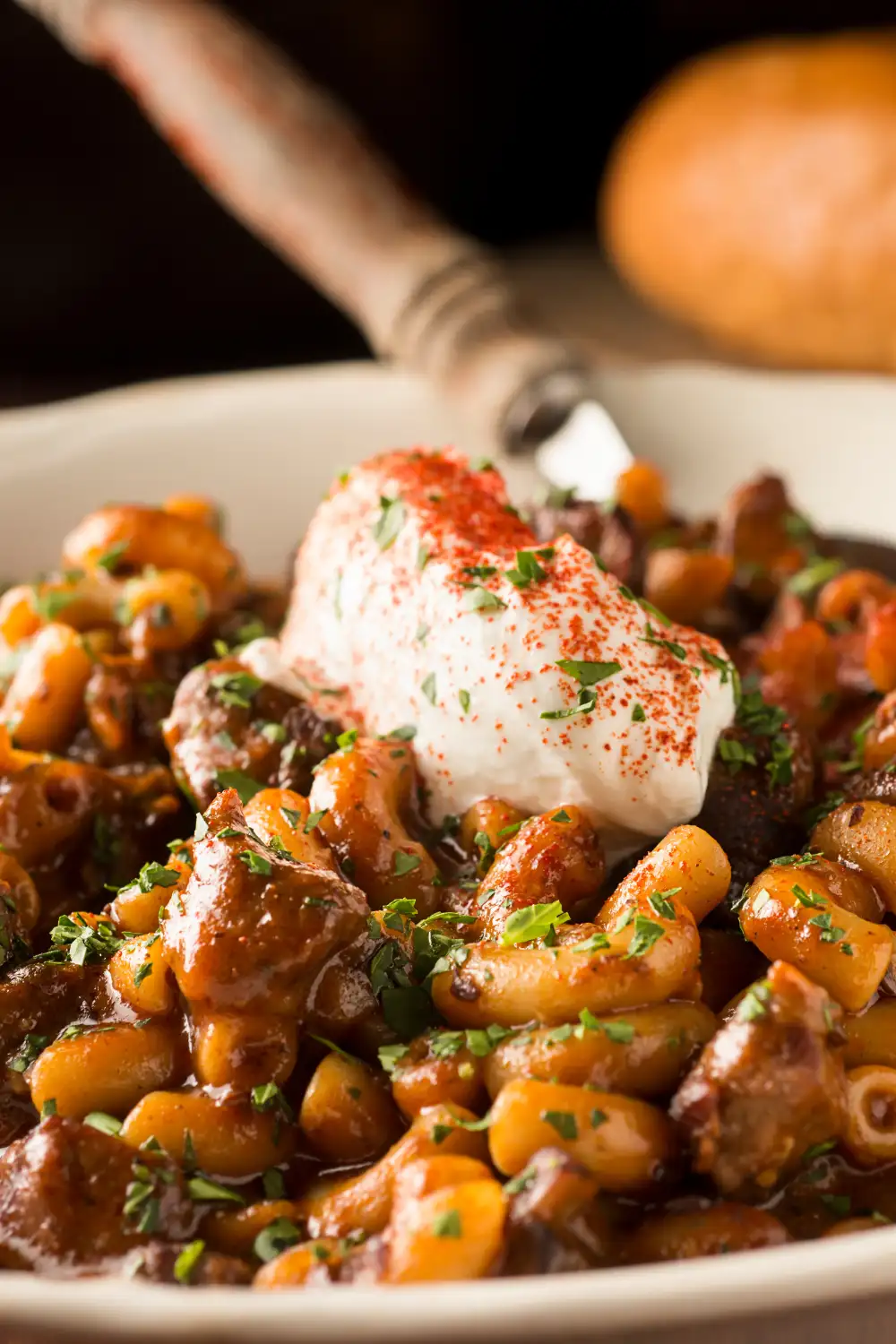
Here’s why goulash is a must-try:
- Rich Flavor: Paprika and spices create a deep, satisfying taste.
- Hearty Ingredients: Beef and vegetables create a filling meal.
- Versatile Pairing: Often served with dumplings, bread, or potatoes.
Whether enjoyed in a cozy tavern or at a street festival, goulash offers a taste of tradition that is both comforting and delicious.
Trdelník
Trdelník is a sweet treat that has captured the hearts of locals and tourists alike. This pastry is a delightful spiral of dough, rolled in sugar and nuts, then grilled to perfection. The result is a crispy exterior with a soft, fluffy interior, making it a perfect snack or dessert.
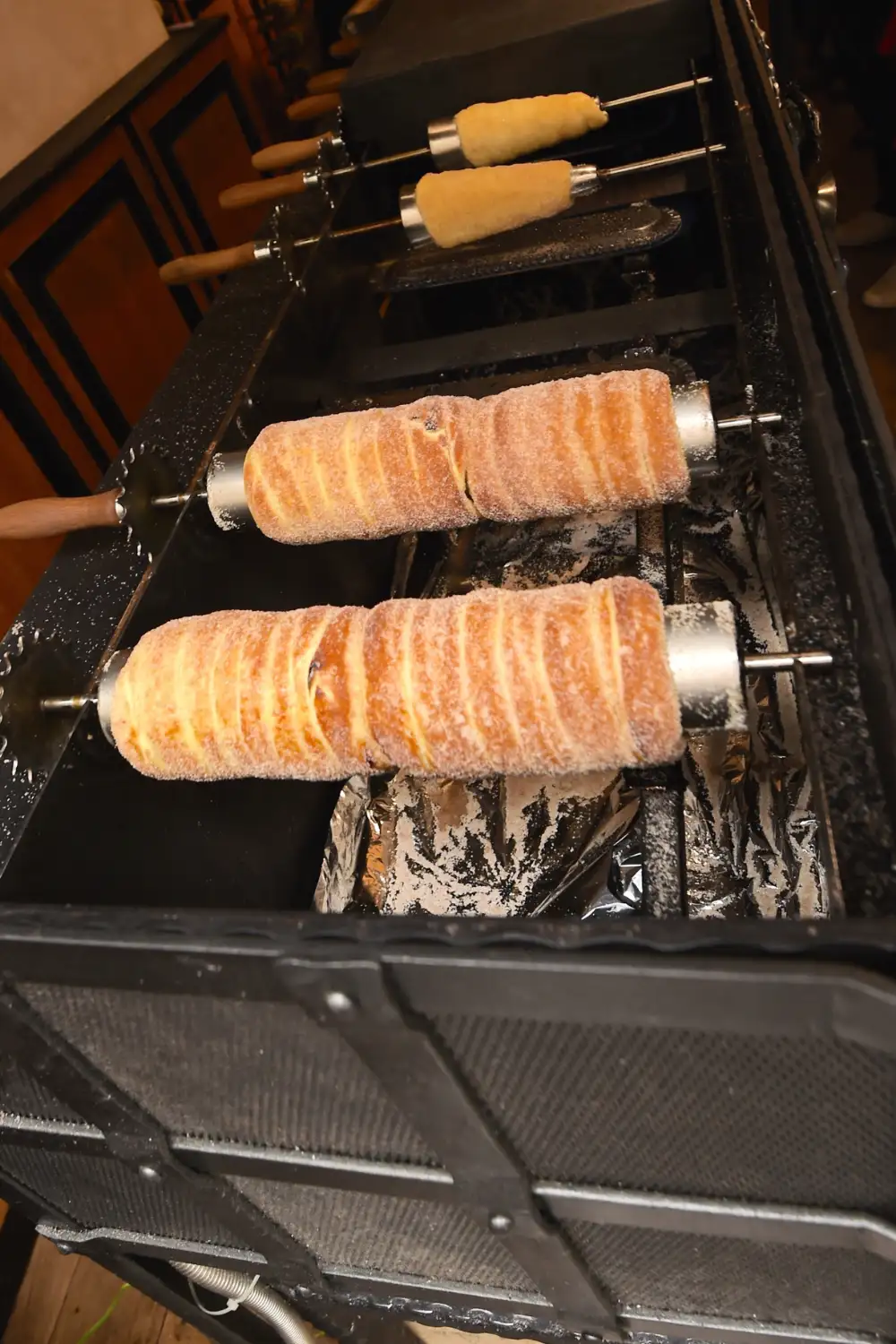
Key reasons to try trdelník include:
- Unique Preparation: Grilled on a spit, creating a distinctive texture.
- Sweet Flavor: Sugar and nuts add a delightful crunch.
- Versatile Options: Often filled with chocolate, ice cream, or fruit.
Trdelník is often found at street vendors throughout Prague, offering a quick and satisfying treat. Its aroma and taste are irresistible, making it a perfect way to end your culinary adventure in the city.
Traditional Drinks
Prague’s culinary scene is a delightful fusion of traditional flavors and modern twists. When sampling the best traditional Czech food, trying the local drinks is a must. The traditional drinks in Prague are as iconic as the food itself. From the world-famous Czech beer to the potent Slivovice, each drink tells a story of Czech culture and heritage.
Czech Beer
Czech beer is renowned globally for its high quality and unique taste. With a brewing history that dates back to the 10th century, beer is more than just a drink in the Czech Republic; it’s a way of life. Prague offers a wide variety of local beers that cater to every palate.
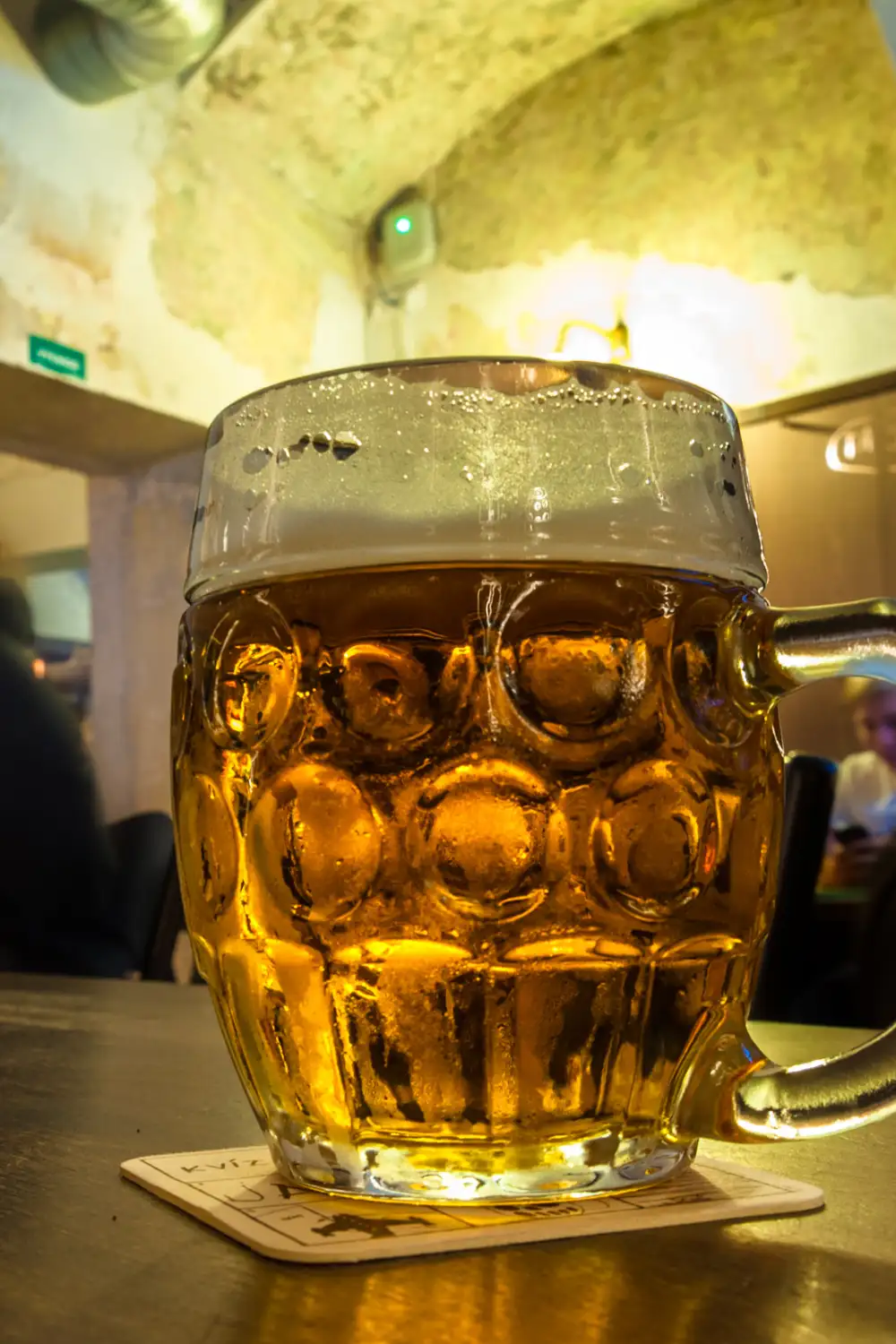
- Pilsner Urquell: The world’s first pale lager, characterized by its crisp, refreshing taste.
- Budweiser Budvar: Rich in flavor, this beer offers a perfect balance of bitterness and sweetness.
- Kozel: Known for its smooth and slightly sweet flavor, ideal for those new to Czech beer.
Many local pubs and beer gardens offer these beers on tap. Drinking beer in Prague is often accompanied by traditional snacks like pickled sausages and fried cheese. Here’s a quick guide to enhance your beer experience:
| Beer Type | Description | Best Pairing |
|---|---|---|
| Pilsner Urquell | Crisp, refreshing, with a hint of bitterness | Pickled sausages |
| Budweiser Budvar | Rich, balanced, slightly sweet | Roasted pork |
| Kozel | Smooth, slightly sweet | Fried cheese |
Exploring the Czech beer scene is a journey into the heart of Czech traditions. Each sip offers a glimpse into the country’s rich brewing heritage.
Slivovice
Slivovice, also known as plum brandy, is a traditional Czech spirit that packs a punch. Distilled from plums, this drink is often enjoyed during celebrations and special occasions. Slivovice is not for the faint-hearted, with its strong and distinctive flavor.

The process of making Slivovice involves fermenting plums and distilling the liquid. The result is a clear, potent spirit that can reach up to 50% alcohol content. Here are some key points to know about Slivovice:
- Authentic Experience: The best way to enjoy Slivovice is in small, local distilleries.
- Serving Style: Traditionally served in small, shot-sized glasses.
- Flavor Profile: Strong, fruity, with a distinct plum aroma.
Many locals enjoy Slivovice with a meal or as a digestif after eating. It pairs well with hearty Czech dishes like roast pork and dumplings. Here’s a helpful guide to Slivovice pairings:
| Food | Pairing Notes |
|---|---|
| Roast Pork | Enhances the rich flavors of the meat |
| Dumplings | Balances the hearty texture |
| Czech Sausages | Complements the smokiness |
Slivovice is more than just a drink; it’s a part of Czech cultural heritage. Tasting this strong spirit offers a deeper understanding of Czech traditions and celebrations.
Street Food Delights
Prague is a city of history, beauty, and delicious food. When wandering the streets, you’ll find many street food options that are not only tasty but also offer a glimpse into traditional Czech cuisine. Let’s explore some of the best street food delights you can find in Prague.
Koláče
Koláče is a traditional Czech pastry that is perfect for a sweet treat on the go. These round pastries are soft, fluffy, and usually filled with a variety of sweet toppings.
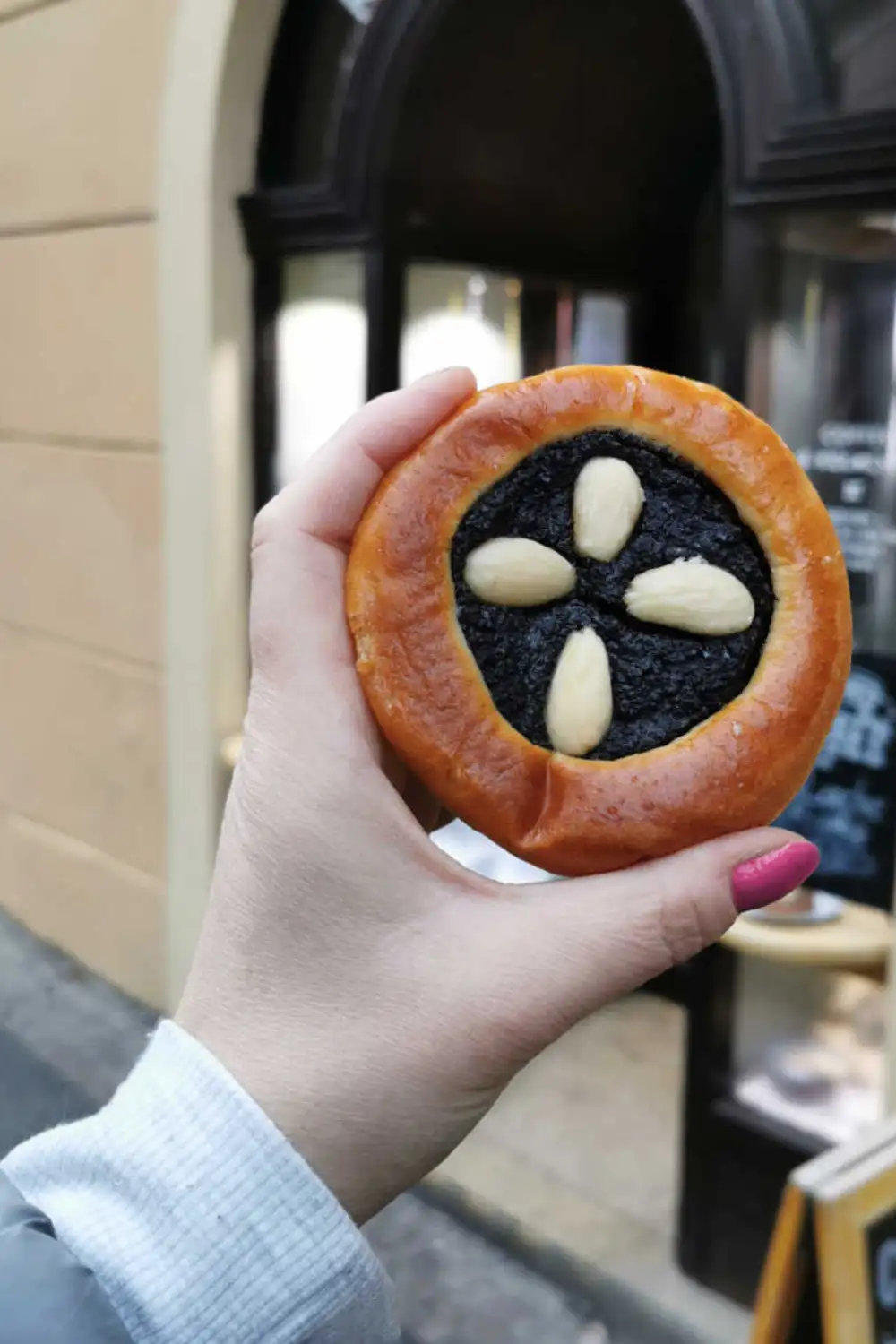
- Types of Fillings:
- Poppy seed
- Apricot
- Plum jam
- Sweet cheese
- Where to Find Them:
- Street vendors
- Bakeries
- Markets
Koláče can be enjoyed any time of the day. They are especially popular during festivals and markets. If you have a sweet tooth, this pastry will definitely satisfy your cravings. The dough is light and airy, making it an ideal snack while exploring the city.
Here is a quick overview of the most popular Koláče:
| Type | Description |
|---|---|
| Poppy Seed | Filled with sweet poppy seed paste. |
| Apricot | Filled with apricot jam. |
| Plum Jam | Filled with homemade plum jam. |
| Sweet Cheese | Filled with a sweet cheese mixture. |
Langoš
Langoš is another beloved Czech street food that you must try. This dish is a deep-fried flatbread that is crispy on the outside and soft on the inside. Originally from Hungary, Langoš has become a staple in Czech street food culture.
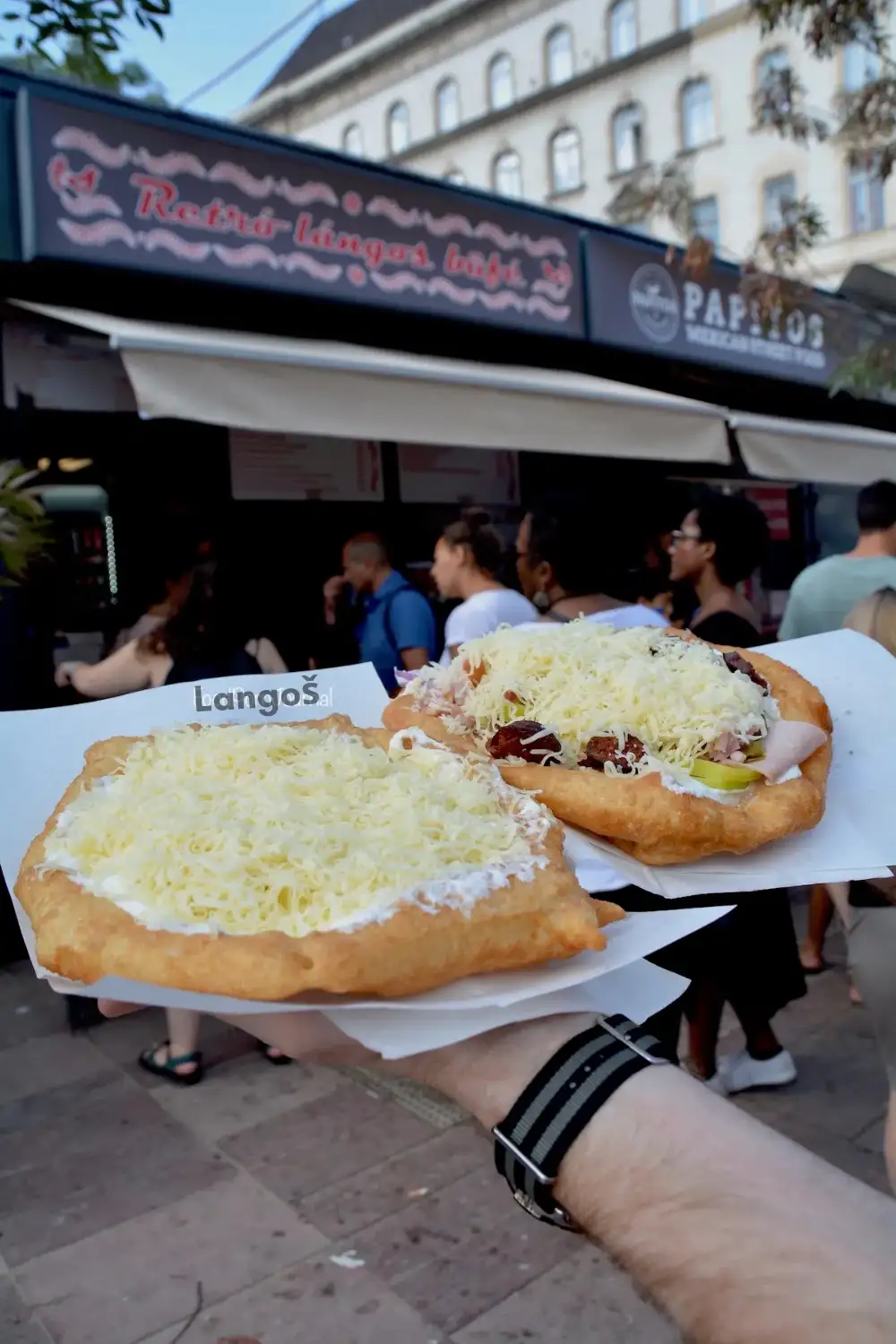
- Popular Toppings:
- Garlic butter
- Grated cheese
- Sour cream
- Ketchup
- Where to Find Them:
- Street stalls
- Food markets
- Festivals
Langoš is a savory treat that can be customized with various toppings. The most traditional way to enjoy Langoš is with garlic butter and a sprinkle of salt. For a richer flavor, you can add grated cheese and a dollop of sour cream.
Here’s what makes Langoš special:
- Texture: Crispy outside, soft inside.
- Flavor: Rich and savory.
- Versatility: Many topping options.
Whether you prefer a simple garlic butter topping or a more elaborate combination, Langoš is a delightful street food that offers a taste of Czech culture.
Dining Etiquette
Prague’s culinary scene is a vibrant tapestry of flavors and traditions. Sampling the best traditional Czech food is not just about savoring the dishes; it’s about immersing yourself in the local culture. Dining etiquette plays a crucial role in this experience. Understanding the nuances of Czech dining customs helps you appreciate the meal and the rich heritage it represents.
Table Manners
In Prague, table manners reflect respect and appreciation for the meal and company. Knowing the etiquette ensures a pleasant dining experience. Here are key points to remember:
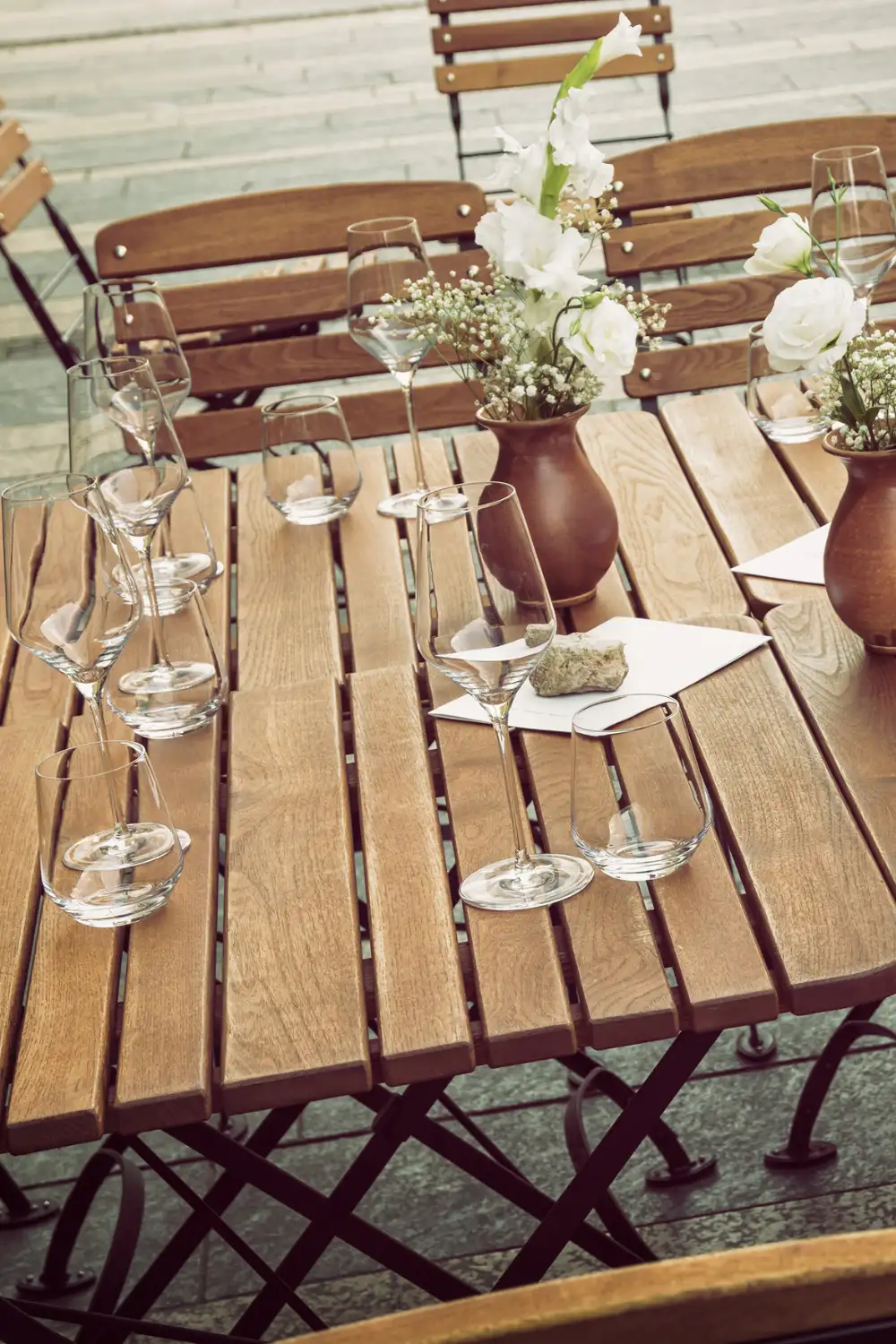
- Wait for the host: Always wait for the host or elder to start eating. It’s a sign of respect.
- Utensils usage: Use your fork in the left hand and knife in the right. Keep them resting on the plate when not in use.
- No elbows on the table: Keep elbows off the table. This is considered impolite.
- Napkin placement: Place the napkin on your lap before starting the meal.
Here’s a quick guide to Czech dining etiquette:
| Action | Etiquette |
|---|---|
| Starting the meal | Wait for the host |
| Using utensils | Fork left, knife right |
| Elbow placement | No elbows on table |
Common Customs
Czech dining customs are steeped in tradition. They enrich your culinary journey. Knowing them adds depth to your experience. Here are some customs to be aware of:
- Toasting: It’s customary to clink glasses and make eye contact while toasting. Say “Na zdraví” (cheers).
- Conversation: Engage in light conversation during meals. Avoid controversial topics.
- Compliments: Compliment the host on the meal. It’s a sign of gratitude.
- Clearing the plate: Finish your meal entirely. Leaving food is considered wasteful.
These customs create a warm and inviting atmosphere. They foster camaraderie and appreciation for Czech culture. Here’s a list of common dining customs:
- Clinking glasses and making eye contact during toasts.
- Engaging in polite conversation.
- Expressing gratitude with compliments.
- Finishing all the food on your plate.
Food Markets To Explore
Prague is a city rich in history and culture, and its culinary scene is no exception. Sampling the best traditional Czech food is a must for any visitor. One of the best ways to immerse yourself in local flavors is by exploring the city’s vibrant food markets. These markets offer a variety of fresh produce, traditional dishes, and unique culinary experiences. Below are two must-visit food markets in Prague.
Havelské Tržiště
Located in the heart of Prague, Havelské Tržiště is one of the oldest markets in the city. Established in 1232, this market has a long history of serving locals and tourists alike. It is a bustling market filled with vendors selling a wide range of goods, from fresh fruits and vegetables to traditional Czech souvenirs.
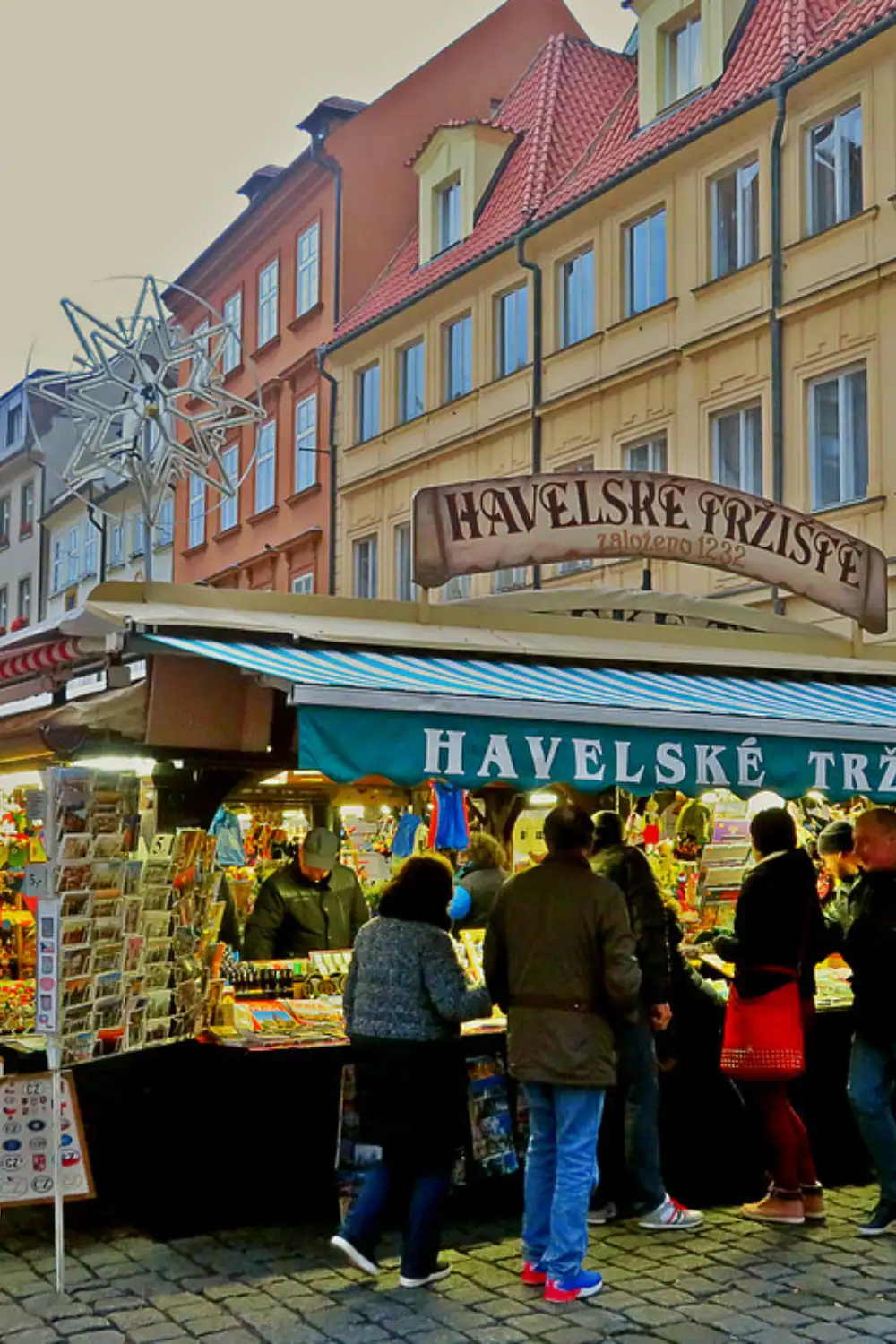
When you visit Havelské Tržiště, be sure to sample some of the local foods:
- Trdelník: A sweet pastry made from rolled dough, grilled and topped with sugar and walnut mix.
- Sausages: Various types of Czech sausages, perfect for a quick and tasty snack.
- Cheese: A selection of local cheeses, including the famous Olomoucké tvarůžky.
Here is a quick overview of what you can expect:
| Item | Description |
|---|---|
| Trdelník | Sweet pastry with sugar and walnut topping |
| Sausages | Various types of Czech sausages |
| Cheese | Selection of local cheeses |
The market is open daily, making it easy to fit into your travel itinerary. It is an ideal spot to enjoy a leisurely stroll, sample delicious foods, and soak in the local atmosphere.
Náplavka Farmers Market
Situated along the Vltava River, the Náplavka Farmers Market is another must-visit. This market is open every Saturday and is known for its fresh and organic produce. It is a popular spot for locals who appreciate quality ingredients and traditional Czech foods.
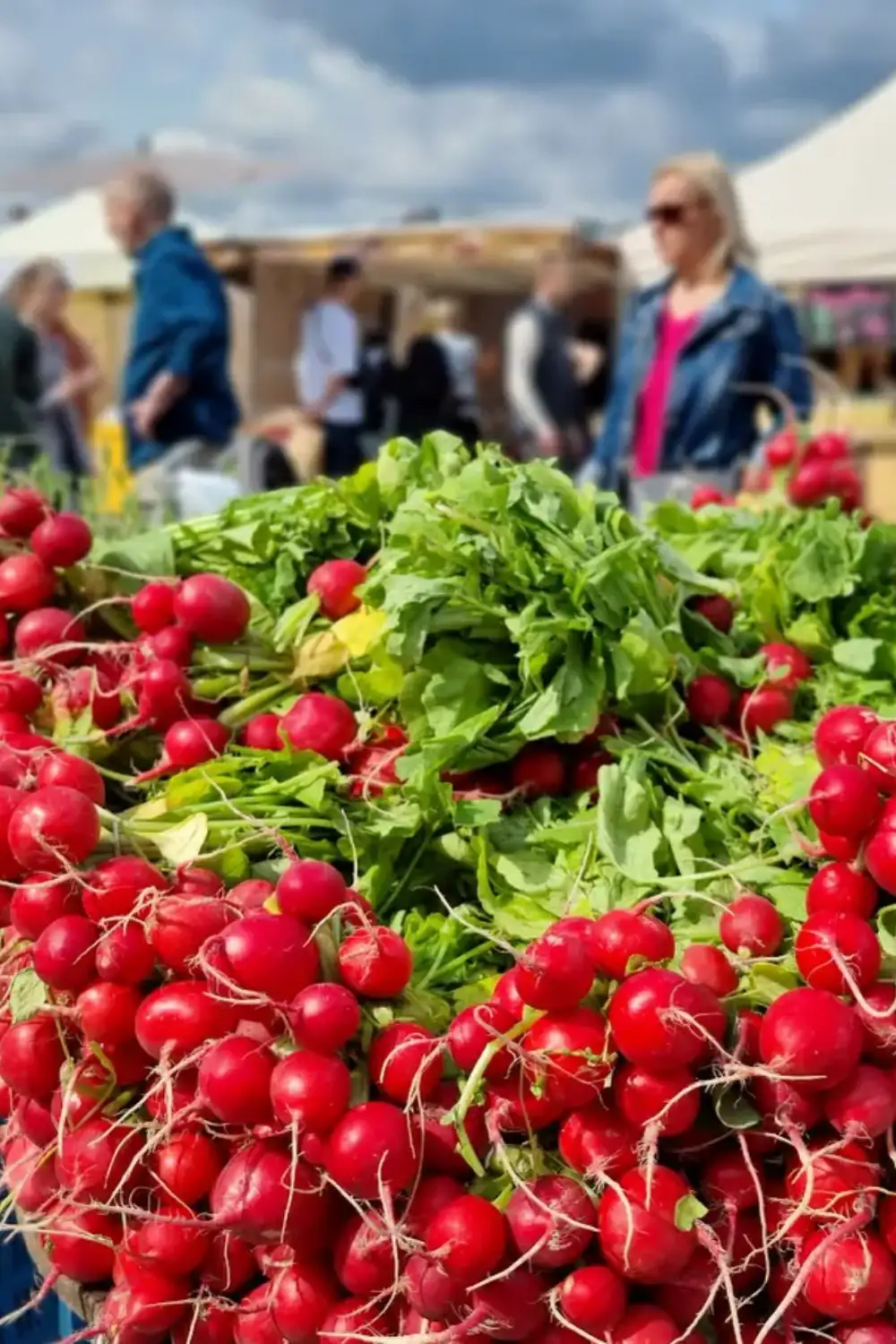
Some highlights of the Náplavka Farmers Market include:
- Fresh Vegetables: Locally grown and organic vegetables.
- Artisan Bread: Freshly baked bread from local bakers.
- Craft Beers: A variety of local craft beers to sample.
Here’s a snapshot of the market offerings:
| Item | Description |
|---|---|
| Fresh Vegetables | Organic and locally grown |
| Artisan Bread | Freshly baked from local bakers |
| Craft Beers | Variety of local craft beers |
The market also hosts various events, including live music and food tastings, making it a lively and engaging place to visit. It’s perfect for those who want to experience the local culture and enjoy fresh, high-quality food.
Culinary Tours
Prague, the heart of the Czech Republic, is a paradise for food lovers. From hearty meals to delectable pastries, traditional Czech food is a treat for the taste buds. To truly experience the culinary delights of Prague, exploring through culinary tours is a must. These tours offer a unique way to sample the best traditional Czech food, guided by experts or through self-discovery.
Guided Food Tours
Guided food tours in Prague are perfect for those who want to dive deep into the local cuisine with the help of an expert. These tours are led by knowledgeable guides who are passionate about Czech food and culture. They take you to hidden gems and popular spots, ensuring you taste the best dishes Prague has to offer.
During a guided food tour, you can expect to:
- Visit iconic food spots: Explore famous restaurants and cafes known for their traditional Czech dishes.
- Learn about Czech culinary history: Understand the origins and stories behind the dishes you taste.
- Sample a variety of foods: From savory dishes like goulash and roast pork to sweet treats like trdelník and koláče.
One popular option is the Prague Food Tour, which includes:
| Stop | Dish |
|---|---|
| Old Town Square | Trdelník |
| Local Pub | Czech Beer |
| Traditional Restaurant | Svíčková |
Guided tours offer a structured and informative way to explore Prague’s culinary scene. They are ideal for those who prefer having a local expert lead the way, making the experience enriching and hassle-free.
Self-guided Experiences
For adventurous souls, self-guided food experiences in Prague are an exciting option. These allow you to explore at your own pace, discovering culinary treasures along the way. With a little planning, you can create your own food tour and enjoy the freedom to choose where and what to eat.
Here’s how you can plan a self-guided food tour:
- Research and map out locations: Find popular food spots and local recommendations online.
- Create an itinerary: Plan your route to ensure you cover different neighborhoods and types of cuisine.
- Try local markets: Visit places like the Havelská Market for fresh produce and street food.
Some must-visit spots for a self-guided tour include:
- Lokál: Known for traditional Czech pub food.
- Eska: Offers modern Czech dishes with a twist.
- U Fleků: Famous for its historic brewery and hearty meals.
Self-guided experiences provide flexibility and a sense of adventure. You can spend more time at places you love and skip those that don’t appeal to you. This type of tour is perfect for independent travelers who enjoy exploring and discovering new tastes on their own.
Sweet Treats
Prague is a paradise for food lovers. Among the delights are traditional Czech sweets. These treats are perfect for satisfying your sweet tooth and experiencing the rich flavors of the region. Two must-try desserts are Trdelník and Koláče. They come in various flavors and variations, each offering a unique taste of Czech culture.
Trdelník Variations
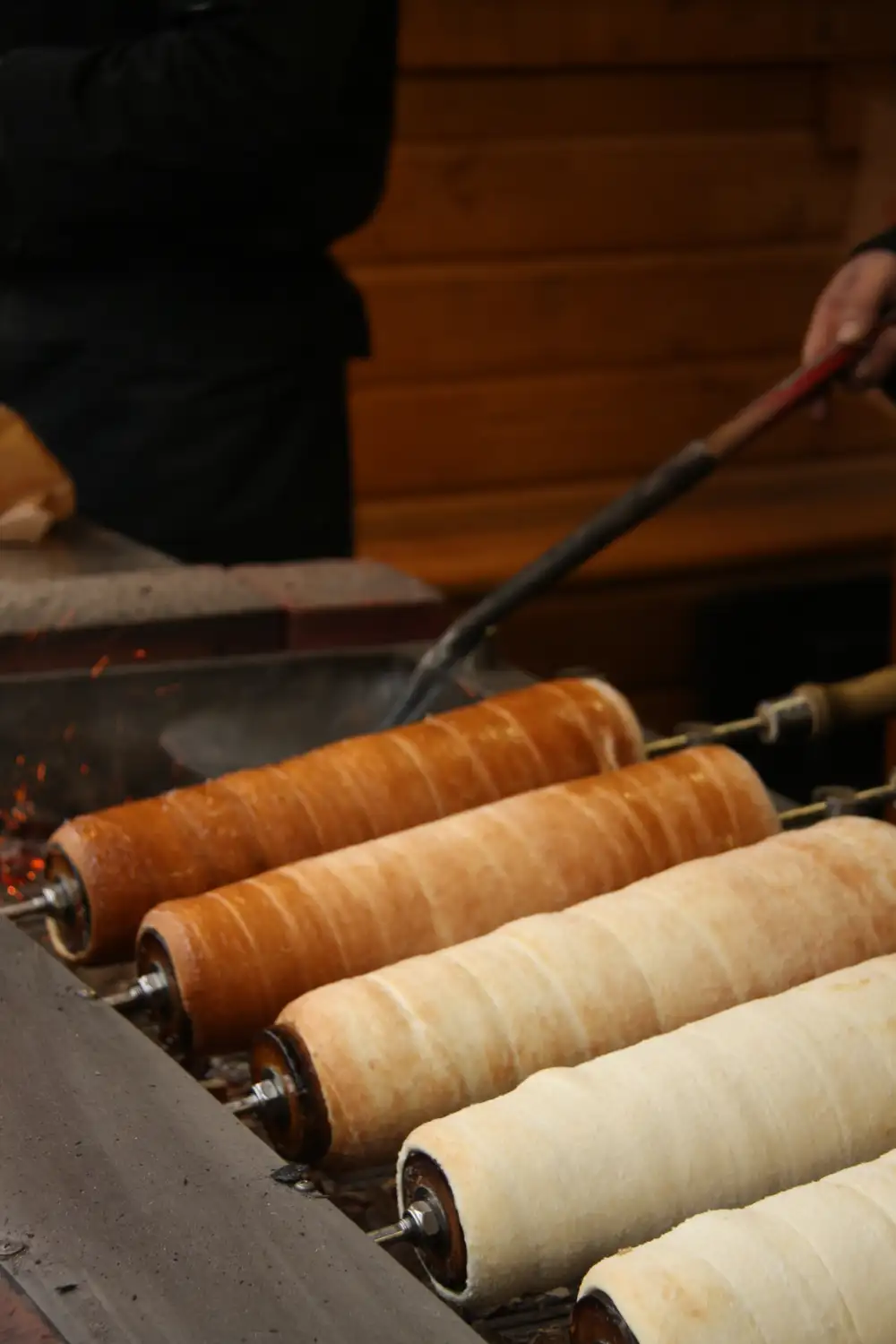
Trdelník, also known as chimney cake, is a popular street food in Prague. This sweet pastry is made by wrapping dough around a stick and roasting it over an open flame. The result is a crispy, golden-brown treat with a soft, fluffy interior. Trdelník is often coated in sugar and cinnamon, but there are many variations to try.
- Traditional Trdelník: The classic version with a sugar and cinnamon coating.
- Chocolate Trdelník: Filled with rich chocolate sauce, perfect for chocoholics.
- Nutty Trdelník: Rolled in crushed nuts like almonds or hazelnuts for added crunch.
- Fruit Trdelník: Filled with strawberry, apple, or blueberry jam for a fruity twist.
- Ice Cream Trdelník: A modern take with vanilla or chocolate ice cream inside, ideal for hot summer days.
Each variation offers a different flavor experience. You can find Trdelník vendors all over Prague, often near tourist attractions like the Charles Bridge and Old Town Square. The aroma of freshly baked Trdelník is irresistible, drawing visitors to sample this delicious treat.
Koláče Flavors

Koláče is another traditional Czech dessert. These sweet pastries are similar to small pies and come with various fillings. The dough is soft and buttery, making Koláče a favorite among locals and tourists alike. Here are some popular flavors:
| Flavor | Description |
|---|---|
| Poppy Seed | Filled with sweet poppy seed paste, offering a nutty taste. |
| Quark | Stuffed with sweet quark cheese, creamy and delicious. |
| Apricot | Filled with apricot jam, providing a tangy and sweet flavor. |
| Plum | Made with plum jam, a traditional favorite with a rich taste. |
| Nut | Filled with ground walnuts and sugar, offering a crunchy texture. |
Koláče can be found in bakeries and cafes throughout Prague. They are often enjoyed with a cup of coffee or tea. Each flavor provides a unique taste, making it hard to choose just one. Trying different Koláče flavors is a delightful way to explore Czech cuisine.
Frequently Asked Questions
What Is The Traditional Food Of Prague?
Prague’s traditional food includes dishes like goulash, svíčková, and trdelník. Enjoy hearty meat dishes and rich flavors.
What Is The Most Traditional Dish In Czech Republic?
The most traditional dish in the Czech Republic is “svíčková na smetaně. ” This dish features marinated beef sirloin served with creamy vegetable sauce, dumplings, and sometimes cranberry sauce. Svíčková is a beloved Czech classic, often enjoyed during special occasions and family gatherings.
What Is The Best Food To Eat In Prague?
The best food to eat in Prague is traditional Czech cuisine. Try dishes like svíčková, goulash, and trdelník. Don’t miss tasting Czech beer.
Where Do Celebrities Eat In Prague?
Celebrities often dine at La Degustation, Café Savoy, and Kampa Park in Prague. They enjoy fine dining and unique experiences.
Conclusion
Prague’s food scene is a delight for the senses. From hearty goulash to sweet trdelník, each dish tells a story. Visitors should savor Czech beer, known for its rich flavors. Try svíčková for a true taste of tradition. Local markets offer fresh and authentic experiences.
Exploring Prague’s cuisine is a journey through history and culture. Every bite connects you with the city’s vibrant past. So, next time you’re in Prague, embrace the culinary adventure. Taste, explore, and enjoy the flavors that make Prague unique. A memorable experience awaits your taste buds.

